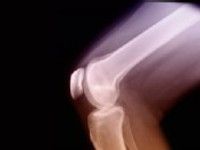Article
3D Printer Creates Replacement Cartilage for Osteoarthritis
Author(s):
Researchers used a combination of stem cells, growth factors, and scaffold to grow human cartilage, which they hope will heal patients with osteoarthritis and other joint pain.

Following their success in growing living human cartilage on a laboratory chip, scientists plan to use 3D printing technology to create replacement cartilage for patients with osteoarthritis (OA), according to a presentation at the Experimental Biology 2014 meeting, held April 26-30, 2014, in San Diego.
Researchers from the University of Pittsburgh School of Medicine used 3 main elements to create their approach: stem cells, biological factors that allow the cells to grow into cartilage, and a scaffold to give the tissue its shape. According to the presenters, utilizing 3D printing permits these factors to come together by forcing thin layers of cells to retain their shape inside a solution of growth factors. The researchers built upon existing knowledge, which used harmful UV light, to develop a method using visible light.
The investigators also used the 3D printing method to produce the first “tissue-on-a-chip” model of the bone-cartilage interface. Although it is only 4 mm in length and 8 mm in depth, the chip houses 96 blocks of living human tissue and can be used as a model for understanding the development and progression of OA.
“Osteoarthritis has a severe impact on quality of life, and there is an urgent need to understand the origin of the disease and develop effective treatments,” lead study investigator Rocky Tuan, PhD, said in a press release. “We hope that the methods we’re developing will really make a difference, both in the study of the disease and, ultimately, in treatments for people with cartilage degeneration or joint injuries.”
The research team previously developed a nanofiber spinning technique that they hope to combine with their newest 3D breakthrough to create an artificial cartilage that more closely resembles natural cartilage.
“With more testing, I think we’ll be able to use our platform to simulate osteoarthritis, which would be extremely useful since scientists really know very little about how the disease develops,” Tuan said. “Ideally, we would like to be able to regenerate this tissue so people can avoid having to get a joint replacement, which is a pretty drastic procedure and is, unfortunately, something that some patients have to go through multiple times.”
Another goal of the 3D printing model is to aid soldiers with battlefield injuries. Tuan, the co-director of the Armed Forces Institute of Regenerative Medicine, received funding from the US Department of Defense, among other outlets, for his research.





